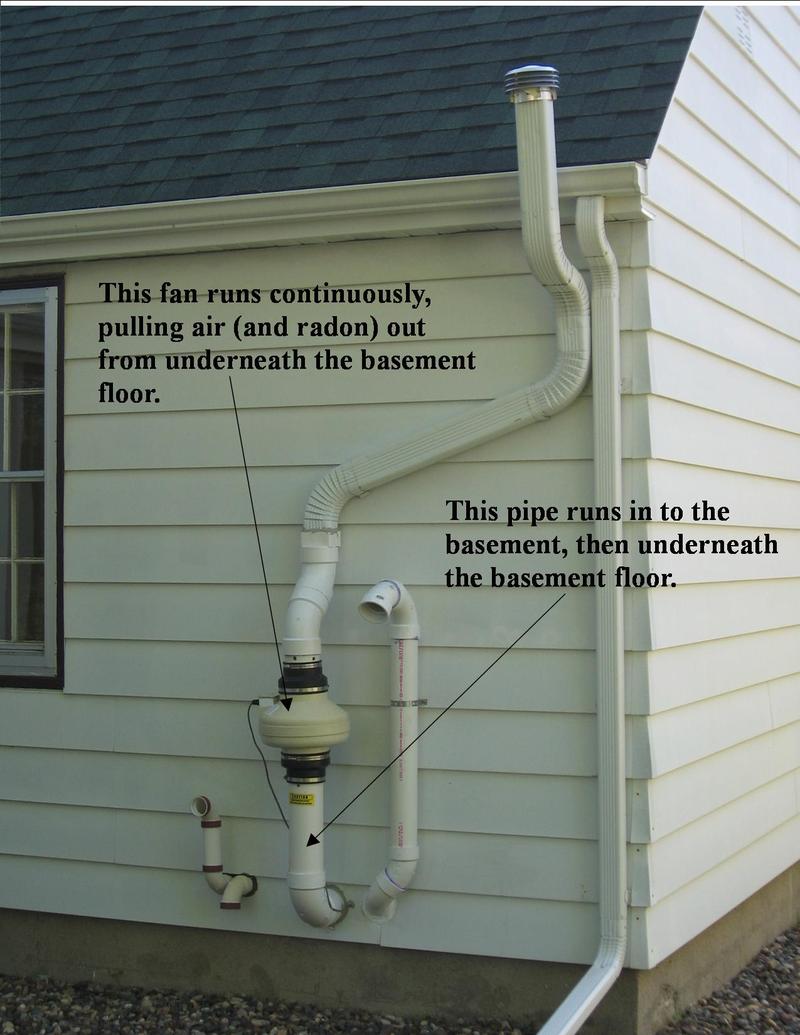Every home in Minnesota should be tested for Radon, and if you haven’t had your home tested, have it done. Radon is a gas formed by the breakdown of uranium and radium, both of which are found in high levels in Minnesota. Radon gas is the number one cause of lung cancer among non-smokers and is the second leading cause of cancer in America. Every home is susceptible to radon, and I can tell you from experience that there are a large number of homes in the Twin Cities with high radon levels. Approximately 1/3 of the homes that I test for radon have elevated levels.
Some homes are at higher risk for radon than others. Radon enters into a home through any openings in a basement to the earth, such as cracks in the floor or walls, sump baskets, openings in the top of block walls, etc. Homes that have uncovered crawl spaces would be especially susceptible to radon gas, but even obvious factors cannot be used to make a determination – every home really does need to be tested. I’ve been doing radon testing for over 11 years now, and I’ve come to know that radon is a very random thing; two houses built right next to each other, with identical construction, could have completely different radon levels. I have next to no radon in my own home, but my neighbor had a very high level in his basement – our houses were both built in the ’40s, and are of almost identical construction.
If a high radon level is found in a home, it is best to contact a mitigation company to correct the higher levels. The most common way of reducing radon in a home is to install a sub-slab pump, which relieves the soil gas pressure below the home. My neighbor had this type of system installed in his home, and now has a very low level of radon. Mitigation systems typically cost about $1500, but there can be a wide range in prices. The photo below shows the pipe going into the basement, and the fan that pulls gases out from beneath the slab. This is a very unusual system because most are almost completely hidden from view, but I love this photo because it clearly shows how the system works.

Starting this year, homes built in Minnesota will need to be built with a passive radon mitigation system. That means a pipe that runs from the basement to the attic will need to be installed when the home is built. A fan can be easily added later if high radon levels are found in the home. Just knowing that Minnesota requires radon resistant construction should be enough to tell you that this is a serious issue.
I hear many objections to radon testing – some are valid, but most are not. Here they are:
- I don’t have a basement. You’re right! You probably don’t have radon. There is no guarantee… but I have yet to do a radon test above grade and find any significant levels of radon.
- I have a new home. It doesn’t matter. I’ve found extremely high levels of radon in new construction homes – the radon doesn’t care how old your home is.
- I don’t / won’t spend any time in my basement. What about the next person that buys your home? A high radon level in a home is a potential liability. If you’re buying a home, it’s important to have it tested – ignoring the health effects, just think about the next owners. Picture this: you buy a home and don’t have it tested for radon, sell the home a year later, and the buyers have the home tested. They find a high radon level and ask you to pay for a mitigation system. You might kick yourself for not testing the home when you bought it.
- I already have a mitigation system. You’re right. You probably don’t have any radon if you already have a mitigation system. I’ve never found high radon levels in a home with a mitigation system.
- This whole radon thing is a conspiracy. Sure… and cigarettes don’t cause cancer. Don’t leave your tinfoil hat at home 😉
- It’s too expensive to test. Do-it-yourself test kits are available at home improvement stores and even places like Target or Sears for somewhere between $10 and $25. These kits are just as accurate as the professional tests that I do, but they are not practical for a real estate transaction. For a real estate transaction, you need an unbiased third party to do the test, and you need fast results.
This has been a cursory overview of why it’s important to test for radon. You can learn more about radon testing in Minnesota at my website, or at the Minnesota Department of Health website. As always, you can also email me with any questions.
Reuben Saltzman, Structure Tech Home Inspections – Email – Radon Testing in Minneapolis
